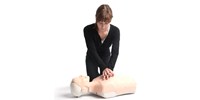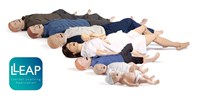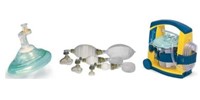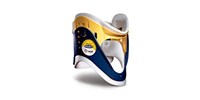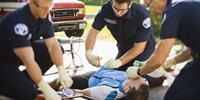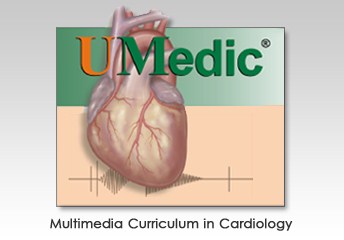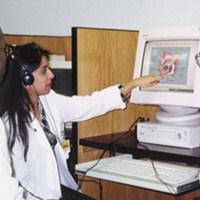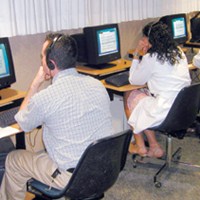The UMedic Multimedia Computer Curriculum is a patient-centered system that has been shown to enhance the learner's bedside examination skills while also teaching patient histories, laboratory data and treatment. Bedside skills in UMedic are taught through video demonstrations of Harvey®, The Cardiopulmonary Patient Simulator, a full-size manikin that simulates the physical findings of essentially any cardiac disease.
Product Benefits
- UMedic can be used linked to Harvey, The Cardiopulmonary Patient Simulator, or independently
- Provides a comprehensive curriculum in cardiology
- Effectively teaches bedside skills to many different populations and levels of learners
- Self-learning reduces instructor time and cost of finding patients with certain bedside findings at any given time in the academic year
Product Features
- 20 Case-based Interactive Programs
- Emphasizes Bedside Skills
- Covers all Evaluation and Treatment
- For Students, Residents, Physicians, Physician Assistants, Nurses and Nurse Practitioners
- Database to Track Performance
- Unlimited Learners on Network
- Pulmonary Findings
- Most Current Patient Treatment
- Most Current Patient Evaluation
- Compatible with Original or Current Harvey
Curriculum
The curriculum is divided into four series of five programs; emphasizing pathophysiology and bedside skills, common management problems and congential and acquired diseases to provide a comprehensive curriculum in cardiology.
FIRST SERIES
Emphasizes pathophysiology and bedside skills and includes:
- The Normal Patient
- Aortic Stenosis
- Aortic Regurgitation
- Mitral Stenosis
- Mitral Regurgitation
SECOND SERIES
Emphasizes common management problems and includes:
- Angina Pectoris
- Acute Inferior Infarction
- Acute Anterior Infarction
- Cardiomyopathy
- Hypertension
THIRD SERIES
Adds additional congenital and acquired diseases and includes:
- Atrial Septal Defect
- Acute Pericarditis
- Primary Pulmonary Hypertension
- Acute Mitral Regurgitation
- Hypertrophic Obstructive Cardiomyopathy
FOURTH SERIES
Emphasizes pediatric diseases and includes:
- Innocent Murmur
- Mitral Valve Prolapse
- Ventricular Septal Defect
- Coarctation of the Aorta
- Tetralogy of Fallot
Content
Each program includes the entire patient encounter. The student is guided by an instructor who provides explanations, feedback and remediation.
- HISTORY
- BEDSIDE FINDINGS
Presented by an instructor on "Harvey," the Cardiopulmonary Patient Simulator
- General appearance
- Blood pressure
- Arterial and venous pulses
- Precordial movements
- Cardiac and pulmonary auscultation
- DIAGNOSIS
- LABORATORY DATA
- CBC and blood chemistries
- Electrocardiograms
- X-rays
- Real-time echo Dopplers
- Other imaging techniques and angiograms
- TREATMENT
- This component features videos of interventional therapy and surgery
- PATHOPHYSIOLOGY
- DISCUSSIONS
- Key teaching points and remediation
- Case reviews by authoritative cardiologists

